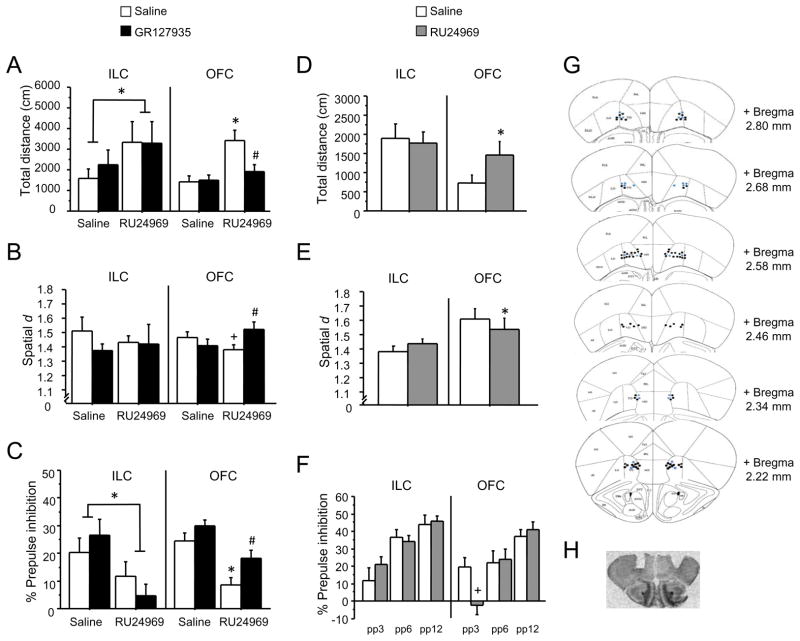Figure 5.
5-HT1BRs in the OFC are necessary and sufficient for the generation of OCD-like behaviors. Mice received bilateral local infusions of the 5-HT1B/1DR antagonist GR127935 (0 or 20 μg/side) into the ILC (n=7/group) or OFC (n=20/group) 30 min prior to a systemic (i.p.) injection of the 5-HT1BR agonist RU24969 (0 or 10 mg/kg). Mice were then tested for total distance traveled (A) and perseveration (spatial d) (B) in the open field, and prepulse inhibition (C). Separate groups of mice received bilateral local infusions of RU24969 (0 or 5 μg/side) into the ILC (n=10) or OFC (n=12) and were tested for total distance traveled (D) and perseveration (spatial d) (E) in the open field, and prepulse inhibition (F). Schematic representation of successive coronal sections (rostral to caudal) of the mouse brain (G) (adapted and reproduced with permission from (81)) and representative pictomicrograph (H) showing the histological verification of cannula placements in the orbitofrontal cortex. Black dots indicate cannula placement for animals infused with antagonist, and blue dots indicate cannula placement for animals infused with agonist. For ILC cannula placement, see Figure S3 in Supplement 1. Results are presented as means ± s.e.m. Asterisk (*) indicates P <0.05 compared to saline. Pound sign (#) indicates P <0.05 compared to chronic vehicle treatment. Plus sign (+) indicates a strong trend and P-values (in order of appearance) are: P =0.1, P =0.06.

